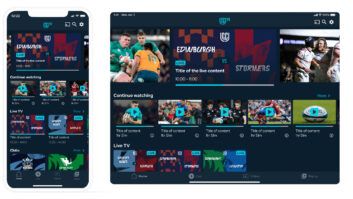
Conviva has released the findings of its inaugural report, which found that streaming interruptions, inadequate picture quality and other poor experience issues prompt nearly three-quarters of all OTT video viewers to give up in the first four minutes of playback. The report, ‘How consumers judge their viewing experience’ reveals the steep challenges OTT service providers, Internet Service Providers (ISPs) and Content Delivery Networks (CDNs) face in today’s shifting broadcast consumption landscape.
Conviva conducted the survey in early 2015, interviewing 750 consumers that fell within the key demographic of OTT viewers aged 26-34.
“The stakes have never been higher,” said Hui Zhang (pictured), CEO of Conviva. “As content consumption moves away from the traditional TV-based model, broadcasters need to ensure their online platforms deliver a seamless experience regardless of the device used.”
The survey also found that viewers report low tolerance for poor video experience: Only 25 per cent of respondents would engage with video content for more than four minutes of an inferior viewing experience. Respondents were also asked what their immediate response would be to an unsatisfactory experience. Their responses suggest that there is significant risk to providers who do not manage each viewer’s experience. Although half said they would close the video and start again, if the same thing happens again only half of them would try again – it takes only a few short cycles for the majority of the audience to bleed away. Three out of ten said they would search for the same content on other services and, with the proliferation of outlets offering good quality content, this could mean easy losses to competition.
Attachment to specific OTT services vacillates, and one in three viewers leaves to find content elsewhere as soon as playback degradations occur and 40 per cent reported reduced affinity for a service after one bad experience. Audiences are also fickle in their attachment to an OTT video service, the report concluded, with one in three abandoning the current provider as soon as they have an inferior experience.
Consumers often jump between different devices when watching content, so the survey questioned respondents on the impact of a poor viewing experience on one device, and how this would affect their moving to use the same service on a different device. Offering a large selection of supported devices alone does not provide much protection against a poor viewing experience on a single device. Around one in three clearly expressed the low likelihood of migrating from, for example, a connected TV to a tablet; while just one in 15 considers that a likely move. So long as consumers will not try another device, the report stated, a poor viewing experience on any supported platform can compromise all the others.
The report concluded by asking respondents who was to blame for poor quality viewing experiences. Consumers assign blame in almost exactly equal shares to the OTT service they are using, the ISP delivering to their home, and the Content Distribution Network (CDN) connecting the two. This would appear to be good news for all participants in the chain, however, it means that regardless of who is actually at fault each provider is equally likely to be blamed by one in a three consumers. Providers must, the report concluded, track and manage the ecosystem as well as their own performance.







